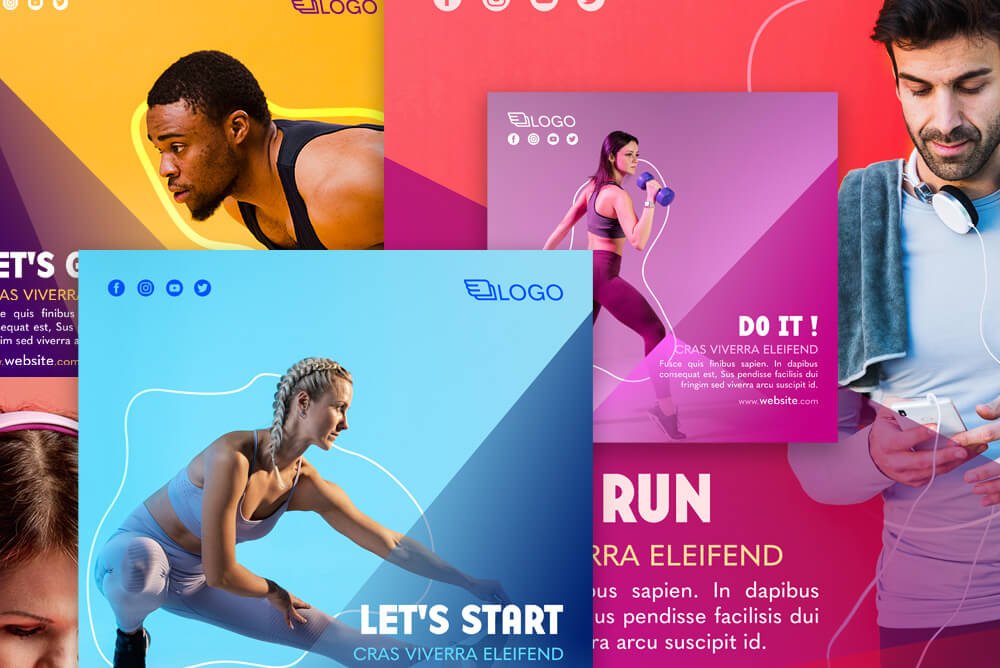Do you want to master Facebook advertising? Then you need to understand the Facebook ads metrics!
Overview of Facebook Ads Metrics
Any business owner who runs advertising campaigns on Facebook or Instagram and wants to maximize their returns should always consider their Facebook ads metrics. Tracking the ads metrics and optimizing your ads based on this data can be vital to the success of your advertising campaigns. But how do you take advantage of them and how can you track them? First, you need to know what are the key ads metrics to follow. Examples of important Facebook ads metrics to take into account are CTR, CPC, or conversion rates. Let’s discuss them in further detail.
Key Ad Performance Metrics Explained
So, what are the most important ad performance metrics that you should take into account?
Here are the most important ad performance metrics that you should consider when analyzing your advertising campaigns:
- Click-through rate (CTR): CTR Facebook ads is the percentage of people who saw your Facebook ad and clicked on it. This is a good measure of how relevant your ad is to your target audience. A high CTR means that your ad is catching people’s attention.
- Cost per click (CPC): The average amount you pay each time someone clicks on your ad. This is a good measure of the efficiency of your advertising campaign. A lower CPC means that you’re getting more clicks for your money.
- Conversion rate (CVR): The percentage of people who took a desired action after seeing your ad, such as visiting your website or making a purchase. Conversion rates are some of the most vital ads metrics because they show the performance of your ads. A high CVR means that your ad is converting people into customers or leads.
- Return on ad spend (ROAS): The amount of revenue you generate for every dollar you spend on advertising. This is a measure of the overall profitability of your advertising campaign. A high ROAS is a high ad performance metric.
- Cost per acquisition (CPA): The average amount you pay to acquire a new customer or lead. This is a similar metric to ROAS, but it focuses specifically on the cost of acquiring new customers. A lower CPA means that you’re getting more customers for your money.
- Frequency: The average number of times each person saw your ad. This is important to track if you’re running an advertising campaign with a narrow target audience because you don’t want to overexpose your ads to the same people.
- Relevance score: A measure of how relevant your ad is to the people who see it. This is determined by a variety of factors, including the ad’s content, targeting, and bidding. A high relevance score means that your ad performance is very high.
These difference factors can cumulatively signify the state of your ad performance metrics. You can then adjust your advertising campaign based on these factors and maximize your results. Ad fatigue can occur when your audience becomes overly familiar with your ads, leading to decreased engagement and conversions; by refreshing ad content and targeting, we can rejuvenate interest and maximize your ad conversions. In fact, If you find yourself unsure about how to effectively maximize ad results on Facebook; our comprehensive “how to advertise on Facebook 2024” guide offers a wealth of insights, strategies, and expert tips to help you navigate the intricacies of advertising on the platform and achieve optimal outcomes for your campaigns.
Understanding Ad Objectives and Metrics Alignment
Facebook advertising can be incredibly challenging for business owners. It’s especially difficult to navigate the advertising realm for those who are relying on Facebook ads as a major source of clientele. However, there is a way of ensuring that your ad objectives align with your metrics, thus ensuring that your Facebook advertising campaigns are bringing in the best results they possibly can. How? You simply need to align your current advertising objectives with the metrics that you’re tracking at the moment.
Awareness is the first objective marketers go for. This objective revolves around getting people to know about your brand or product. The goal is to create brand awareness and generate interest, achieved especially well on Facebook, Instagram, and other Meta platforms.
Facebook ads metrics used to measure awareness include:
- Reach: The number of people who saw your ad.
- Frequency: The average number of times each person saw your ad.
- Impressions: The number of times your Facebook ad was displayed.
The next objective to consider is, well, consideration. This objective is focused on getting people to think about your brand or product as a potential solution to their problem. The goal of this objective is to generate interest and consideration.
The main ads metrics we utilize to measure consideration are:
- Click-through rate (CTR): The percentage of people who clicked on your Facebook ad after seeing it.
- Conversion rate: The percentage of people who took a desired action, such as signing up for a newsletter or making a purchase, after clicking on your Facebook ad.
And the final objective is conversion. This objective is all about getting people to take a specific action, such as making a purchase or signing up for a service. Our aim here is to generate sales or leads.
The ads metrics we as Meta marketers use to measure ad conversions are:
- Cost per acquisition (CPA): The average amount of money you spend to acquire a new customer or lead.
- Return on ad spend (ROAS): The amount of money you make for every dollar you spend on Facebook advertising.
Analyzing Ad Performance Metrics
The best way to analyze Facebook ads metrics is on the ad level. You can also go for the ad set level, but we wouldn’t recommend analyzing it on the campaign level because, at that point, there isn’t much that can be adjusted even if you find something that isn’t working well.
Analyzing ad performance metrics is crucial for optimizing advertising strategies, ensuring maximum ROI and audience engagement. However, it’s equally important to navigate Facebook ad account limits effectively to avoid restrictions on campaign scalability and reach.The ad set level is a bit better as you have more freedom, but analyzing each ad separately is best as it gives you the most precise and exact information you can ever get. But how can you analyze your ad performance metrics?
First, you go to the Ads tab and look at the ad performance metrics data provided for each ad. Now, look at the ads that have the best and worst performance metrics. Facebook provides you with the data on each ad separately so you can see how every ad is doing with every parameter. Consider your current objective and the ad performance metrics most relevant to your current goals. Open the best-performing ad and the worst-performing ad to compare them. Check them for every single one of your selected Facebook ads metrics. Think of what could be the cause of the difference in performance. Is there a drastic difference in color, design, or symbolics? Is it maybe the difference between the copies? Is it the tone or the message itself? Consider every aspect of both ads and adjust the low-performance ads to match the best version and deliver the results you’re looking for. If you want to improve your ROAS significantly then its advised to delegate your marketing campaigns to a meta advertising agency.
Beyond the Basics: Advanced Digital Marketing Metrics
Do you want to level up your Facebook advertising and ads metrics understanding further? We have the key to going just a bit further to see those impressive results.
Here’s our list of advanced digital marketing metrics that you can use to gain deeper insights into your advertising campaigns:
- Lifetime Value (LTV): This digital marketing metric measures the total amount of revenue a customer is expected to generate over their lifetime with your business. It is a more comprehensive measure of customer value than digital marketing metrics like cost per acquisition (CPA) or conversion rate, as it takes into account the long-term relationship between the customer and your business.
- Customer Acquisition Cost (CAC): Digital marketing metrics like CAC measure the average amount of money you spend to acquire a new customer. It is a good way to track the efficiency of your digital marketing campaigns and make sure you are not overspending on acquiring new customers. We may have mentioned this before, but it’s important enough to be stressed again. After all, what would be the point of spending on every new customer more than you gain from them?
- Churn Rate: The churn rate is a digital marketing metric that helps you analyze the percentage of customers who stop doing business with you over a period of time. It is a good way to track the health of your customer base and identify areas where you can improve customer retention.










